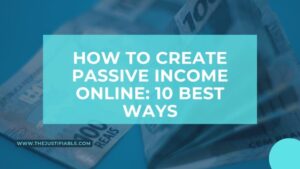In today’s rapidly evolving digital landscape, affiliate partners have emerged as a prominent channel for businesses to expand their reach and drive sales. But what exactly does this entail, and why have so many businesses integrated this model into their marketing strategy? Let’s delve into the intricate world of affiliate partnerships.
My Recommendations
FlexOffers
| MyLead
| ShareASale
|
What are affiliate partners?
Affiliate partners, often just referred to as affiliates, are individuals or organizations that promote products or services for another company, usually through their online platforms like blogs, social media channels, or websites. In return, they earn a commission for every sale, click, or specific action that’s generated through their marketing efforts.
Essentially, think of them as external ambassadors for a brand, working on a performance-based compensation model. Unlike traditional advertising where businesses pay upfront without any guaranteed results, affiliate marketing relies on actual sales or specific outcomes to compensate the promoters. This not only shifts the risk but also ensures that businesses are paying for genuine results.
Why businesses leverage affiliate partnerships.
There’s a myriad of reasons businesses are increasingly leaning into affiliate partnerships. Here are a few:
- Cost-effective marketing: Since commissions are paid only when there’s an actual sale or a desired action, businesses often find affiliate marketing to be more cost-effective than other forms of advertising. There’s no upfront hefty budget allocation—instead, expenses are tied to actual sales.
- Wider reach: Affiliates often have dedicated audiences that trust their recommendations. Partnering with these influencers allows businesses to tap into these established communities, thus broadening their reach.
- Diverse marketing channels: Affiliates come from various online niches – bloggers, YouTubers, podcasters, social media influencers, and more. This variety ensures that products and services are presented to potential customers through multiple touchpoints, increasing the chances of conversion.
- Risk mitigation: With its performance-based model, businesses only pay for genuine conversions. This not only ensures they get value for their investment but also minimizes the financial risks associated with other marketing endeavors.
- Scalability: The affiliate marketing model is highly scalable. A business can start with a few partners and then expand its affiliate network as it grows, continuously reaching new audiences and markets.
Preparing for Your Affiliate Partnership Program
Embarking on an affiliate partnership journey is akin to setting out on a grand voyage; preparation is key. A well-laid foundation ensures that your affiliate endeavors not only gain traction but also flourish, reaping rich dividends for your business.
Here, we’ll unravel the initial steps to laying this foundation, which centers around identifying the right offerings for promotion and comprehending the pulse of your target audience.
Identifying the right products or services for affiliate promotion.
At the heart of every successful affiliate partnership program lies a product or service that resonates with both the affiliates and their audience. But how do you pinpoint which of your offerings are ripe for affiliate promotion?
Start by assessing your product or service portfolio. Analyze which items have the best sales records or generate the highest customer interest. Often, these popular choices become natural fits for affiliate marketing, as they already have proven market appeal.
However, sometimes, it’s strategic to push products or services that are new or underperforming through affiliate channels. This might be to generate buzz or to tap into a niche audience segment. When considering such a move, it’s paramount to provide affiliates with the necessary information, training, and tools to effectively promote these offerings.
Furthermore, ensure that the products or services you earmark for affiliate promotion are in alignment with the values and interests of potential affiliate partners. A mismatch here can dampen enthusiasm and render the partnership ineffective.
Understanding your target audience for efficient affiliate marketing.
Knowing your audience is the lynchpin of any marketing initiative, and affiliate marketing is no exception. With a deep understanding of your target demographic, you can tailor your affiliate partnership program to appeal directly to their preferences and pain points.
Dive deep into the characteristics of your ideal customer. What are their preferences, online behaviors, challenges, and aspirations? Where do they spend most of their online time? Which influencers or content creators do they trust? Answers to these questions help shape the direction of your affiliate program.
By having this understanding, you can also be more selective in choosing affiliate partners. Rather than casting a wide net, you can partner with influencers or content creators who already cater to your target audience, ensuring a natural and authentic promotion of your offerings.
Finding the Right Affiliate Partners
The success of an affiliate partnership program is largely contingent on the quality of partners you align with. Just as a ship is only as strong as its crew, your program will only thrive if you have the right affiliates championing your brand.
As such, it becomes imperative to discern the attributes of an ideal affiliate and know where to find them. Let’s chart this exploration together.
The key qualities to look for in potential partners.
Identifying an exemplary affiliate partner goes beyond mere numbers. While a large follower count can be enticing, it’s not the sole benchmark of an effective affiliate. It’s essential to probe deeper, understanding their influence and assessing their alignment with your brand values.
One of the pivotal qualities to seek in a potential affiliate partner is the trust they command among their audience. An affiliate whose recommendations are perceived as genuine and unbiased can effectively drive conversions. This trust is often built over time, nurtured by consistent, authentic content, and transparent interactions.
Another paramount trait is their content alignment with your product or service. It would be incongruent, for instance, for a tech blogger to suddenly endorse skincare products. Such a mismatch can erode trust and dilute the effectiveness of the partnership.
Engagement rates are also a crucial factor. An affiliate who maintains active interactions with their audience, through comments, shares, or direct messages, signifies an engaged community. Such communities are often more receptive to recommendations, leading to higher conversion potential.
Lastly, it’s valuable to consider the professionalism of potential affiliates. Are they responsive and open to feedback? Do they adhere to agreed-upon terms? Such qualities ensure a harmonious and fruitful working relationship.
Platforms and tools to discover top-performing affiliate partners.
The digital arena is teeming with potential affiliate partners, but how do you sieve out the gems from the vast expanse? Thankfully, there are platforms and tools designed to streamline this search.
Affiliate networks are a good starting point. Platforms like MyLead, ShareASale, and FlexOffers act as intermediaries, connecting brands with a plethora of affiliates. These platforms often provide metrics and insights, aiding in the selection process.
For brands seeking influencers, platforms like Upfluence, AspireIQ, and Brandwatch can be invaluable. They provide a curated database of influencers across niches, complete with performance metrics, making it easier to pinpoint suitable partners.
In addition to these platforms, using social media monitoring tools can be advantageous. Tools like BuzzSumo or Mention can help brands track mentions, identify trending topics, and discover content creators who are already discussing their industry or products.
Setting Up Your Affiliate Program Infrastructure
Creating a robust affiliate program infrastructure is akin to building a home. Every brick you lay and every corner you design should serve the occupants, providing them the tools, comfort, and motivation to thrive.
In the world of affiliate marketing, these ‘occupants’ are your affiliate partners. Crafting a seamless, user-friendly infrastructure will not only draw them in but also motivate them to put their best foot forward, championing your brand with enthusiasm.
Choosing the right affiliate software and tracking tools.
The cornerstone of a successful affiliate program is its software and tracking mechanisms. You’ll need a platform that can seamlessly onboard new partners, track their referrals, manage commissions, and offer real-time data insights.
There’s a plethora of affiliate software options available in the digital space, each with its unique set of features. When making a choice, consider the scalability of the software. As your program grows, you’d want a platform that can handle an influx of new affiliates without compromising on performance. Integration capabilities are also crucial.
The software should effortlessly blend with your website, e-commerce platform, and other digital tools, ensuring a cohesive experience.
Another pivotal aspect is tracking. Given that affiliate marketing is performance-based, having precise and reliable tracking tools is non-negotiable. These tools should accurately attribute sales or actions to the respective affiliate, ensuring they’re rewarded justly for their efforts.
Advanced tracking mechanisms can also provide insights into customer behaviors, helping affiliates fine-tune their strategies for better conversions.
Designing an attractive commission structure for affiliate partners.
A commission is the lifeblood of affiliate marketing. It’s the reward your partners earn for their dedication and efforts. Hence, your commission structure should be both lucrative for the affiliates and sustainable for your business.
When designing this structure, consider the industry standards, but don’t be afraid to think outside the box. While a fixed percentage of the sale price is a common model, you might explore tiered commissions, rewarding affiliates who achieve specific milestones.
Alternatively, bonuses for top performers or seasonal incentives can add a touch of excitement, motivating affiliates to push boundaries.
While generosity is key, it’s also crucial to ensure that the commission structure doesn’t erode your profit margins. Striking the right balance between incentivizing affiliates and maintaining profitability can be a delicate act but is essential for the program’s longevity.
Creating engaging promotional materials for partners.
Equipping your affiliates with the right promotional tools is paramount. These materials should encapsulate your brand ethos while being adaptable to various platforms, from blogs to social media.
Consider crafting a range of materials, from high-resolution product images to engaging video snippets. Detailed product descriptions, testimonials, or even behind-the-scenes glimpses can add depth to these promotional tools. It’s also beneficial to offer customizable templates, allowing affiliates to infuse their unique voice while maintaining brand consistency.
Additionally, regular updates are vital. As your product line evolves or new features are introduced, ensure your affiliates are armed with the latest materials, keeping their promotions fresh and relevant.
Building Strong Relationships with Affiliate Partners
In the intricate dance of affiliate marketing, while metrics, commissions, and promotional materials play pivotal roles, it’s the relationship with your affiliate partners that truly sets the stage for enduring success.
Much like the roots of a tree, these relationships nourish and anchor your affiliate program, ensuring it grows tall and resilient. Delving deeper into this realm, let’s explore how effective communication and empowerment strategies can strengthen these essential ties.
Effective communication methods for long-term success.
Communication, often heralded as the backbone of any relationship, holds a magnified significance in affiliate partnerships. In an ecosystem where partners often work remotely and autonomously, maintaining open channels of communication becomes vital.
One effective method is periodic check-ins. Instead of merely touching base when there’s an issue or a promotion, consider scheduled interactions, be it monthly or quarterly. These can be via video calls, ensuring a personal touch and fostering a sense of connection.
Newsletters are another potent communication tool. Regularly updating your affiliates about product launches, company news, or market trends keeps them in the loop, ensuring they feel integral to the brand’s journey. This not only equips them with fresh content but also reinforces their role as brand ambassadors.
Feedback loops are equally important. Encourage your affiliate partners to share their insights, challenges, or suggestions. By valuing their input and implementing actionable changes, you build a foundation of mutual respect and collaboration.
Providing training and resources to empower affiliate partners.
Empowerment is the catalyst that transforms a good affiliate partner into a great one. When partners are equipped with the right knowledge and tools, they champion your brand with renewed vigor, resonating authenticity and expertise.
Kickstart this empowerment journey with comprehensive training sessions. This could range from product deep-dives to insights into the target audience. For partners unfamiliar with your industry, consider foundational training modules, ensuring they grasp the nuances and can speak authoritatively about your offerings.
Beyond product knowledge, training can extend to marketing strategies. Sharing best practices, SEO techniques, or content creation tips can significantly elevate the quality of their promotional endeavors.
Another empowering gesture is providing a resource hub, a centralized portal where partners can access promotional materials, training modules, industry research, and more. Ensuring this hub is regularly updated ensures your affiliates always have the latest tools at their disposal.
Tracking and Evaluating Affiliate Partner Performance
The dynamism of affiliate marketing, with its myriad partners and fluctuating metrics, is much like an intricate dance. While finding the right partners and setting them up is pivotal, it’s the continuous tracking and evaluation that ensures the dance remains harmonious and productive.
A robust tracking and evaluation system not only gauges the effectiveness of your affiliate partnerships but also offers insights into areas of potential growth and optimization. Let’s delve into this realm, understanding the mechanisms of performance analysis and the strategies for partnership enhancement.
Tools and metrics essential for performance analysis.
In the affiliate landscape, accurate tracking isn’t just beneficial—it’s indispensable. It offers clarity on which partners are driving traffic, conversions, and thereby revenue. This clarity, in turn, aids in making informed decisions, be it in commission allocation or partnership continuation.
Central to this tracking endeavor are specialized affiliate tracking software solutions. Platforms such as Post Affiliate Pro, AffTrack, and LinkTrust offer a suite of tools tailored to track affiliate actions. These tools meticulously monitor every click, sale, and lead, attributing them to the respective affiliate partner.
However, it’s not just about raw data; it’s about what this data signifies. Here’s where metrics come into play. Common metrics include:
- Conversion Rate: It reveals the percentage of referred traffic that culminates in a sale. A higher rate signifies an affiliate’s ability to target and engage a relevant audience.
- Average Order Value (AOV): This metric provides insights into the average spending of customers brought in by an affiliate. It’s a reflection of the quality and purchasing intent of the referred audience.
- Return on Investment (ROI): By analyzing the ratio of net profit to the cost of the affiliate partnership, you gauge its financial viability.
- Click-Through Rate (CTR): It’s an indicator of the effectiveness of the promotional content. A higher CTR suggests that the affiliate’s content is resonating with the audience.
- Customer Lifetime Value (CLV): It measures the total revenue a business can expect from a single customer account, showcasing the long-term value brought in by the affiliate.
Strategies for optimizing and scaling the partnership.
Once you’ve garnered insights from the tracking data, the next step is harnessing these insights for partnership optimization.
- Feedback and Collaboration: Engage in a dialogue with your affiliate partners. Share the performance metrics, appreciating their efforts, and discussing areas of improvement. Collaborative brainstorming can yield innovative promotional strategies tailored to their specific audience.
- Tiered Commission Structures: To motivate high-performing affiliates, consider introducing a tiered commission model. As they hit certain performance benchmarks, they unlock higher commission rates. It’s a win-win, incentivizing them to amplify their efforts.
- Continual Training: The digital landscape is ever-evolving. Regularly update your affiliates on product enhancements, market trends, or any shifts in brand positioning. This ensures their promotions remain relevant and effective.
- Explore New Promotion Avenues: Encourage affiliates to diversify their promotional strategies. If they’ve predominantly been leveraging blog content, perhaps they could venture into video content or podcasting. Diverse content formats can tap into different audience segments, amplifying reach.
- Recognize and Reward: Never underestimate the power of recognition. Regularly spotlight top-performing affiliates, be it through newsletters or exclusive badges on your platform. Such gestures foster loyalty and boost morale.
Challenges in Managing Affiliate Partners and Solutions
Affiliate marketing, with its allure of passive income streams and expansive reach, often paints a rosy picture. However, like any enterprise, it’s not without its challenges. Managing affiliate partners, akin to managing any external collaboration, requires delicacy, foresight, and adaptability.
From navigating the maze of common pitfalls to delicately handling disputes, let’s explore the challenges that crop up in managing affiliate partners and the solutions to mitigate them.
Common pitfalls in affiliate marketing and their prevention.
Affiliate marketing is a powerful tool, but it’s not devoid of challenges. Many businesses, eager to harness its potential, occasionally overlook these pitfalls, leading to suboptimal results or strained relationships.
Mismatched Expectations: One of the most recurring challenges in affiliate partnerships is the misalignment of expectations. Brands might envision a particular promotional strategy, while affiliates, with their grasp on their audience, might have a different approach in mind.
Solution: Open communication is key. Before formalizing the partnership, engage in a detailed discussion, laying out your expectations, listening to theirs, and finding common ground. Such proactive conversations ensure a harmonious collaboration.
Inconsistent Brand Messaging: Affiliates, in their zeal to promote, might sometimes deviate from the brand’s core message, leading to inconsistent brand portrayal.
Solution: Provide clear brand guidelines. These guidelines should detail the brand’s ethos, voice, and any messaging nuances. Regular check-ins and reviews can further ensure consistent brand portrayal.
Fraudulent Activities: Affiliate marketing, with its lucrative commission structures, can sometimes attract fraudulent activities. This might range from generating fake leads to click spamming.
Solution: Deploy robust tracking tools that can detect and flag suspicious activities. Periodic audits and setting up preventive mechanisms, such as CAPTCHA for lead generation, can further safeguard against such malpractices.
Nurturing relationships and resolving disputes with affiliate partners.
In the intricate tapestry of affiliate marketing, relationships are the threads that bind everything together. However, disputes, misunderstandings, or disagreements are inevitable.
Delayed Commissions: An often-cited grievance among affiliates is the delay in commission payouts. Such delays can erode trust and dampen motivation.
Solution: Streamline your commission processing system. Automate where possible and always keep a transparent line of communication regarding payment schedules. If delays are unavoidable, inform affiliates in advance, explaining the reasons and assuring them of timely resolution.
Disagreements Over Metrics: Sometimes, there might be disagreements over tracked metrics, be it sales, clicks, or leads.
Solution: Always have a clear and transparent tracking system in place. Consider using third-party tracking solutions, which offer unbiased metrics. In case of discrepancies, engage in a dialogue, examining data from both ends and arriving at a consensus.
Differing Promotional Views: Brands and affiliates, given their unique perspectives, might sometimes have differing views on promotional strategies.
Solution: Remember, the affiliate knows their audience best. While brands should provide guidelines, they should also remain open to feedback. Regular brainstorming sessions can be a platform for collaborative strategy formulation, ensuring both parties are aligned.
Conclusion: Maximizing the Potential of Affiliate Partnerships
The realm of affiliate partnerships, with its interwoven tapestry of strategies, relationships, and metrics, is a powerhouse of potential for businesses. It promises not just expanded reach and passive revenue streams but also authentic brand advocates who amplify your narrative in the vast digital arena.
As we stand on the brink of this exploration, let’s distill the essence of our journey into affiliate partnerships and cast a glance towards the future, eager to discern the evolving contours of this dynamic marketing strategy.
Recap of the step-by-step guide to setting up affiliate partners.
Embarking on the affiliate marketing journey, we began with an understanding of the core concept of affiliate partnerships, delving into its nuances and recognizing the symbiotic benefits it brings to both brands and marketers. We then charted the preparatory steps, emphasizing the importance of choosing the right products and understanding the target audience, ensuring our efforts would resonate with precision.
In our quest for the right partners, we sought key qualities and employed platforms to unearth top-performing affiliates. Once onboarded, the emphasis shifted to building robust relationships. We discussed the significance of communication and empowerment, realizing that the strength of an affiliate program is as much about human connections as it is about strategy.
Performance tracking and evaluation came next, underscoring the need for meticulous monitoring and strategic optimization. And, as with any journey, we encountered challenges. From managing expectations to ensuring consistent brand messaging, we navigated these waters, always keeping the relationship with our affiliate partners at the forefront.
Looking forward: Trends and future prospects in affiliate marketing.
As the digital landscape continues to morph, so does affiliate marketing. One burgeoning trend is the rise of micro and nano influencers in the affiliate space. With their niche, engaged audiences, these influencers promise authentic promotion and higher conversion rates.
The integration of artificial intelligence and machine learning in affiliate platforms is another notable trend. These technologies offer predictive analytics, forecasting potential high-performing affiliates and optimizing promotional strategies.
Voice search and shopping, powered by the proliferation of smart speakers, is set to reshape affiliate strategies. As consumers increasingly use voice commands for purchases, affiliates and brands will need to tailor their content and SEO strategies to align with this paradigm shift.
Moreover, with the growing emphasis on data privacy, transparency will become paramount. Brands and affiliates will need to ensure compliance with regulations, prioritizing user trust and ethical data handling.









